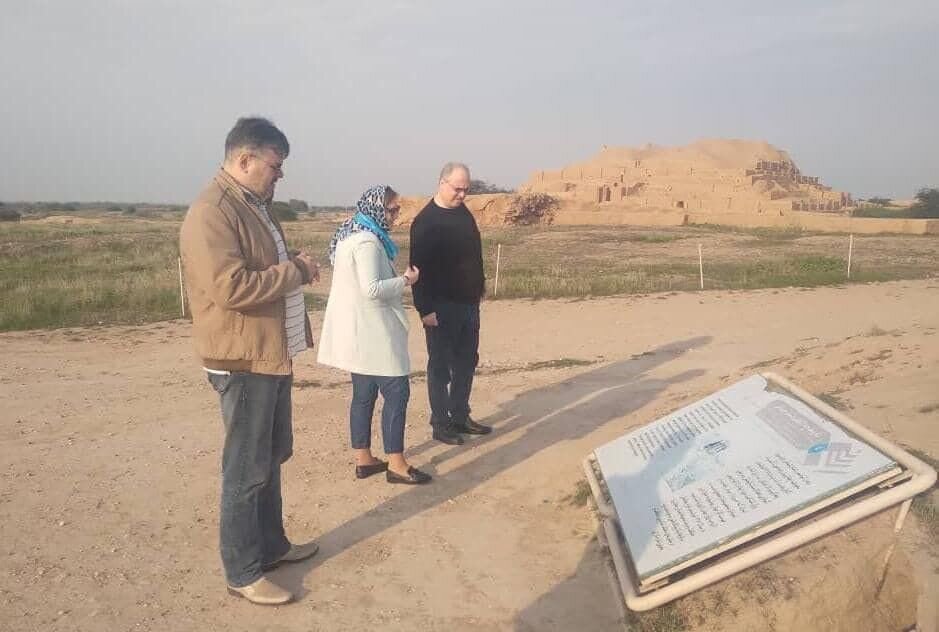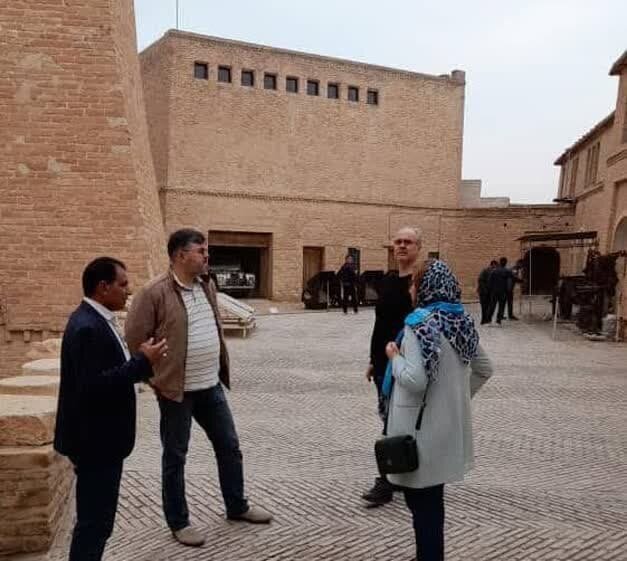Belarusian ambassador visits UNESCO sites in southwest Iran

TEHRAN - Dmitry Koltsov, the ambassador of the Republic of Belarus to Iran, embarked on a visit to the southwestern province of Khuzestan, where he explored the UNESCO-designated sites of Tchogha Zanbil and Susa.
During an informal tour on Thursday, the envoy and his accompanying delegation visited Haft Tappeh Archaeological Site & Museum as well, IRNA reported.
The ambassador, while exploring the Susa Museum, acknowledged the significance of the historical and cultural richness of the archaeological site. He signed the guestbook of the museum as well.
Koltsov expressed admiration for the unique historical role of Susa, which stands as one of the ancient centers of civilization, being the capital of the Elamite civilization and the winter capital of the Achaemenid Empire.
Similar in scale to the UNESCO-designated Persepolis, Susa saw countless invasions and sackings during its history, which spans almost 6,000 years. Various archaeological seasons in Susa have yielded a wide variety of relics, including pottery, arms, ornamental objects, metalwork, bronze articles, as well as clay tablets.

Susa is also a gateway to several worthy destinations, such as Tchogha Zanbil, the ruins of Achaemenid Apadana Castle, Susa (Shush) Castle (Akropol), Prophet Danial Shrine, Museum of Susa, the archaeological mount of Haft Tapeh.
Interestingly, Susa is addressed in the Bible primarily from the story of Esther in which Haman the Agagite planned to defeat the Jews of Persia. According to the story, Esther outwitted him by persuading her husband, King Ahasuerus of Persia, to sabotage Haman’s plan. The episode is commemorated every year in the Jewish Purim festival, which is marked with costumed parties and other celebrations, according to Ancient Origins.
Archaeological evidence suggests that Susa has been continuously inhabited since 4,200 BC, placing it among the oldest continuously inhabited cities in the world. In addition, there are traces at Susa of a village inhabited around 7,000 BC and painted pottery dating from ca. 5,000 BC at the site.
AFM
Leave a Comment